It was our last morning at the Riad dar Tafilalet. Our more than 200 kilometer journey from Fes to Midelt would cover terrain as diverse as the country itself. Like the Moroccan people, the incongruity and contrasts of the landscapes never failed to surprise or even delight us. One hour we were in a bustling city, the next amongst offbeat Swiss chalets, another amongst lonely nomadic villages of the Middle and High Atlas mountain ranges. For us, the stark contrasts were to become the essense of what was a fantastically interesting trip across country that we would never have dreamed of seeing.
Our invoice from our stay at the Raid dar Tafilalet was also a bit surprising. No wonder Houssein and Said had looked a tad uncomfortable the evening before when we had asked for a beer each and a bottle of wine. At a cost of AUD $10 per can of beer and AUD $50 for the bottle of wine, we were slightly taken aback. It was however, because they had to buy the alcohol from a nearby riad - and that was absolutely true. Our Riad dar Tafilalet was unlicensed and there were certainly not any liquor outlets in the old Fes medina. Even at normal liquor shops, wine was around AUD $20 plus per bottle. In hindsight, it was like Sicily - prices were unsurprisingly like those back home in Australia. We had just been spoilt rotten travelling through Asia, the Indo-Pak continent and the Middle East.
The two young men made very formal speeches of farewell. They had been good company and had tried their best to please us. Away from their families in their desert home town of Merzouga they were trying desperately to further their careers, studying and learning different languages. We were surprised and impressed that both had learnt a number of different languages, not through formal studies but through their friendship with the riad guests. As we left, we wondered how they would fare. We are pleased that we are still in contact with them today, and that they both appear to be doing well.
Fes Ville Nouvelle is a vastly different scene from the old city of Fes. Modern buildings and attractive wide tree lined roads with flowering Jacarandas and Eucalypts, revealed a contemporary and stylish new city, and an obvious prosperity. From ancient Fes el Bali the day before to Fes Ville Nouvelle the day after, you could have been in two different countries. We noted two very tall palm trees at either end of the main street. They were quite spectacular and we were very impressed that they looked to be fairly even in height, making a lovely iconic frame for the city road. After vainly trying to photograph them, Mohamed finally told us they were ornamental. Well, they still looked good...
Our first stop on our way to our destination of the central Moroccan city of Midelt was the unusual and rather artificial alpine resort town of Ifrane. Developed by the French in the 1930's as a cool climate garden city haven for the wealthy, the town has a very alpine appearance with bizarre Swiss chalet architecture, lake studded parks and beautiful roadside gardens. At an altitude of 1,665 meters the town experiences considerable snowfalls in winter, making it a very attractive holiday destination for skiing and snow boarding - and for the very wealthy....
Its cool climate vegetation, manicured parklands and distinctly crisp atmosphere reminded us very much of our former home town of Orange in the central west of new South Wales, Australia. And like Orange, the vegetation of Lilacs, Chestnuts, Cedar, Birch, Plane and Linden trees, although lovely, seemed somewhat out of character for a country which is for the most part semi-arid or desert.
Ifrane is home to a Royal Palace much favoured by the current king Mohammed VI and his family, and of course enjoys the prosperity associated with royal patronage. We were intrigued with the degree of fondness the Moroccan people displayed for the current King. Mohamed confirmed that the king and the royal family were still popular with most people and this was validated wherever we went, by his photo being displayed not only in public places but also in private shops, restaurant and cafes.
The elite Al-Akhawayn University is located at the northern end of Ifrane town. Mohamed told us that it is an extremely expensive institution to attend and accommodates mostly wealthy international students, mostly from France and Canada. I rather liked the description provided by Lonely Planet Guide: "It was founded in 1995 by Morocco's King Hassan and King Fahid of Saudi Arabia, and includes in its lofty aims the promotion of tolerance between faiths. For now, only the rich and beautiful need apply - the car parks are full of flash cars, and the air trills with the most fashionable of mobile ring tones. Lessons in English are based on the American system and there are US staff and exchange students...." The tolerance between faiths sounds good. Just a pity the locals can't get a look in or secure a placement for study.
Mohamed left us for about an hour to wander around Ifrane. It was pleasant but there not a lot to do so after a casual walk around the town and parks, we sat down on a street bench and watched the local people walk by. There were very few obvious tourists but the local people were like Morocco itself, a fascinating mix of conventional and very modern. A young man in tight jeans and a t-shirt with an amazing Elvis-like high hair do walked side by side with young women totally covered by brightly coloured traditional gowns. It reminded us very much of similar incongruous scenes we had witnessed on our trip to Iran some years earlier. In some areas, the men still obviously enjoy a lot more freedom than the women.
The countryside from Ifrane to the Middle Atlas was spectacular; richly vegetated with luxuriant forests, interspersed with heavily netted apple and cherry orchards. We passed by the town of Azrou set at the junction of the roads to Fes, Meknes, Midelt and Khenifra. Deep in the Middle Atlas and at an altitude of 1,250 meters, it looks over stunning scenery with sweeping views of oak, cedar and pine forests and verdant high meadows. Winding, soft pine needled forest trails looked inviting and I thought how nice it be to hire a horse and ride through these lovely moist woods. I mentioned this to Alan and Mohamed but in true form they both ignored me, even when we passed signage advertising horse trail rides. "Well, I WILL get my camel ride in anyway..." I muttered. They still ignored me. Passive resistance can be very effective but as Mohamed was to find out and Alan already knew, it doesn't work with me.
Azrou is well known also for the Cedre Gournaud Forest where one of the sub-populations of the Barbary Macaque is found. The Cedar forest is also home to some rare species of butterflies and is a popular attraction for hikers and members of the national and international scientific community. It would also be good for horse riders, I thought.
From Azrou we wound upwards toward the Middle Atlas mountain range where large cement snow barriers surrounded our road. Spectacular wild scenery was dominated by high moist alpine meadows with an abundance of pretty clumping wildflower plants and nomad camps with grazing sheep, goats, mules and of course donkeys. Mohamed explained that all the Middle Atlas was settled by the Berber peoples. He was extremely proud of his own Berber heritage and became quite animated when he spoke of his family and the culture and way of life of the Berber peoples.
Looking over the high valleys and undulating pastures, we could have well been in our favourite country of Pakistan. In fact the entire scenery, including the nomad tents, was highly reminiscent of our travels in 2012 to the Babasur Pass in northern Pakistan. We were to conclude later in our travels that the more remote - and more interesting for that matter - parts of Morocco were like being in Pakistan but without the fear of murder and kidnappings. "A Safer Person's Pakistan" we explained to friends when we were describing our Moroccan Experience. Well, we guessed that was for the time being anyway...
The people you see or meet during your travels are often the most interesting experiences. Near a nomad camp up high in the Atlas, a utility with an animal freight frame attached to the body of the car stopped to pick up a group of nomads. There was much noise and laughter as they heaved onto the truck a huge number of sacks of grains and other goods. Mohamed explained that the "bus" provided transport for them to the local markets where they bought and sold goods. We were held up by the procedure for quite some time but it was an interesting opportunity to observe first hand the way of life for the Berber nomads in this remote and tough environment.
The alpine Middle Atlas is known for its bitter winters with temperatures often plummeting to minus 5 degrees Celsius, poor roads and infrastructure, and harsh living conditions. In a particularly icy winter in 2012, heavy snowfalls made the road to Midelt totally unpassable for some time and a child's death was blamed, like many others, upon the inability to get proper medical assistance. When trucks and cars cannot get through the only means for the farmers and nomads to get to the local villages is by mules, laden with wheat and other grains.
Despite its huge tourist trade and proximity to Europe, much of rural Morocco remains below the poverty line, and the country is ranked 130th in the United Nations Human Development Index. In the villages around the Middle Atlas and toward Midelt, decaying housing and infrastructure was very much apparent. Houses were in shocking states of disrepair and impoverished villages almost resembled bomb sites. In stark contrast with the wealthy and trendy Ifrane which is only kilometers away, there were no trees planted and certainly no gardens. In fact there appeared to be no plants at all and the clay pan roads had no drainage or footpaths.
Some 30 kilometers south of Azrou we stopped for lunch at a small poor looking village of Timahdite. Timahdite is located at an elevation of 1,800 meters and houses a population of around 1,500 people. As to be expected, in addition to its poverty, it also suffers bitterly cold winters.
As we sat waiting to be served at the street side cafe, an emaciated looking young man with dirty hair and wrapped in dirty, long grey ragged coat walked up close to where we were sitting and stared hard at us for some time. I was beginning to feel quite uneasy until Mohamed suddenly jumped up and talked to one of the waiters. We thought he must have been complaining about the man but he had actually bought him a meal. He told the man who nodded and sat at another table. Mohamed explained that there were many homeless people in this poor area and being Berber, it was his duty to provide a poor person with a meal. From that moment on, we decided that our Mohamed was indeed a truly decent human being - if sometimes just a bit difficult to understand.
From Timadhite, the countryside became more rocky and desert-like. The road flattened out to a straight long pencil line across the stony desert, the only features punctuating the scenery were the huge bluff faces of the occasional rocky mesa. Mohamed played his CD "Jeune et Jolie" up full volume as we swept through the desert and down past the village of Zaida and onto the township of Midelt.
We arrived in Midelt in the late afternoon. Apart from a nearby military base and a lonely main street, there wasn't much to see in the desert engulfed city. The surrounding scenery of the stunning red-gold High Atlas however, was eerie and rather special. And we liked the feeling that we were really in the middle of nowhere, with just a few mud brick dwellings surrounding our quite grand Hotel Taddart.
Midelt is located on the high plains surrounding the Moulouya River and houses a population of around 45,000. At an elevation of some 1,500 meters, it is one of the highest towns in Morocco and snow is quite common during the winter months. Midelt is a relatively new city, being established by the French to facilitate the mining of lead, gypsum, minerals and fossils.
Today, the city functions as a market for a large surrounding agricultural area best known for its cool climate produce of apples, walnuts and apricots, as well as plums, pomegranates, wheat and corn. Nomads and sedentary farmers also raise sheep and goats for wool and meat which they market in the city.
Tourism is another growth industry as Midelt is an ideal stopover to Fes in one direction and like us those travelling south, to the Sahara.The city is currently the capital of the Midelt Province of central Morocco.
Our Hotel Taddart was very impressive, looking quite like a fortress from the front or more so, like an ancient caravanserai. It was a new establishment, obviously well set up for tourist parties with large dining areas and function rooms. Mohamed left us for the day, telling us we could rest or take a wander through the hotel's fossil museum.
Our room was large and comfortable with some most unusual black bench tops and mirror trims which looked like a horrible laminate of some type patterned with fake fossils. But the most bizarre thing was, that on our room wall was a framed print of no other than our famous Macke's Donkey! It was not Markt in Tunis (Market in Tunis) but another painting we both like very much called "Mann mit Esel" (Man with Donkey). We were simply amazed. We had gone from searching in vain for Macke's donkey all through Tunisia to finding and now being followed by this Donkey with Attitude all through Morocco! There were several other Macke paintings in the hotel which made us feel very much at home. We were delighted.
In the very late afternoon we decided to have a look at the fossil museum. After a long day's drive and many days of travel and sight seeing we were tired and to be quite frank - very half hearted.
Much to our utter amazement, the museum simply blew us away. A large show room housed a huge collection of fossils from the Sahara Desert from when it was submerged by sea water some 500 million years ago. All specimens were wonderfully intact and beautifully presented, some tiny and exquisite and others (Ammonites) huge and some meters in size. The museum was so stunning that I have devoted a separate entry of photos to the collection (refer next entry).
After our Out of Body Museum Experience we walked around the exterior of the hotel, and past the enormous pool and surrounding seating area. It was all very new and relatively undeveloped but we could see that it would all be very lovely when the trees grew and the landscaping was completed. A huge task. The sun was setting on the desert and reflecting on the mighty High Atlas which simply glowed. Long shadows and glorious red-pink light ended a very special day.
Across the Atlas: Auguste Macke's Mann mit Esel"!!
Saturday, May 17, 2014
 Midelt, Meknès-Tafilalet, Morocco
Midelt, Meknès-Tafilalet, Morocco
Other Entries
-
9Images of Gorgeous Ortygia
May 0710 days prior Ortygia, Italyphoto_camera15videocam 0comment 0
Ortygia, Italyphoto_camera15videocam 0comment 0 -
10"And the Mountains Danced As If Drunk......"
May 0710 days prior Agrigento, Italyphoto_camera19videocam 0comment 0
Agrigento, Italyphoto_camera19videocam 0comment 0 -
11"Akragas - Most Beautiful City Mortals Ever Built"
May 089 days prior Agrigento, Italyphoto_camera16videocam 0comment 0
Agrigento, Italyphoto_camera16videocam 0comment 0 -
12A Quaint Little B & B Called the Antichi Catoi
May 089 days prior Agrigento, Italyphoto_camera8videocam 0comment 0
Agrigento, Italyphoto_camera8videocam 0comment 0 -
13Agrigento to Palermo - The Sicilian Way.......
May 098 days prior Palermo, Italyphoto_camera8videocam 0comment 0
Palermo, Italyphoto_camera8videocam 0comment 0 -
14Photo Album of The Magnificent Grand Hotel Igiea
May 098 days prior Palermo, Italyphoto_camera8videocam 0comment 0
Palermo, Italyphoto_camera8videocam 0comment 0 -
15Palermo: A Quilted History, A Fusion of Cultures
May 098 days prior Palermo, Italyphoto_camera24videocam 0comment 0
Palermo, Italyphoto_camera24videocam 0comment 0 -
16Treasures of the Conca D'Oro: Monreale & Cefalu
May 098 days prior Palermo, Italyphoto_camera16videocam 0comment 0
Palermo, Italyphoto_camera16videocam 0comment 0 -
17Farewell Sicily OR A Shaky Flight to Tunisia.
May 107 days prior Tunis, Tunisiaphoto_camera5videocam 0comment 0
Tunis, Tunisiaphoto_camera5videocam 0comment 0 -
18Tunisia Profile: Phoenicians to the Arab Spring
May 116 days prior Tunis, Tunisiaphoto_camera5videocam 0comment 0
Tunis, Tunisiaphoto_camera5videocam 0comment 0 -
19Tunis: A City of Brilliant White & Cobalt Blue
May 116 days prior Tunis, Tunisiaphoto_camera21videocam 0comment 0
Tunis, Tunisiaphoto_camera21videocam 0comment 0 -
20Toward the Algerian Border: Destination Le Kef
May 125 days prior Tunis, Tunisiaphoto_camera48videocam 0comment 0
Tunis, Tunisiaphoto_camera48videocam 0comment 0 -
21Tunis: Medinas, Mosques, Cafes & Razor Wire
May 134 days prior Tunis, Tunisiaphoto_camera10videocam 0comment 0
Tunis, Tunisiaphoto_camera10videocam 0comment 0 -
22"If You Love Ladakh, You Will Just ADORE Morocco!"
May 143 days prior Casablanca, Moroccophoto_camera18videocam 0comment 0
Casablanca, Moroccophoto_camera18videocam 0comment 0 -
23Morocco Profile: Ancient Berbers - The Arab Spring
May 152 days prior Fes, Moroccophoto_camera4videocam 0comment 0
Fes, Moroccophoto_camera4videocam 0comment 0 -
24Meknes & Volubilis: The Beautiful People Go to Fes
May 152 days prior Fes, Moroccophoto_camera25videocam 0comment 0
Fes, Moroccophoto_camera25videocam 0comment 0 -
25Fes: At Last Macke's Medina and the Elusive Donkey
May 161 day prior Fes, Moroccophoto_camera29videocam 0comment 0
Fes, Moroccophoto_camera29videocam 0comment 0 -
26Across the Atlas: Auguste Macke's Mann mit Esel"!!
May 17 Midelt, Moroccophoto_camera25videocam 0comment 0
Midelt, Moroccophoto_camera25videocam 0comment 0 -
27Tribulations of the Trilobites
May 181 day later Midelt, Moroccophoto_camera12videocam 0comment 0
Midelt, Moroccophoto_camera12videocam 0comment 0 -
28Over the High Atlas: The Camel Man and The Storm
May 181 day later Tinghir, Moroccophoto_camera45videocam 0comment 0
Tinghir, Moroccophoto_camera45videocam 0comment 0 -
29A Smashing Start: How Often Does the Sahara Flood?
May 192 days later Merzouga, Moroccophoto_camera33videocam 0comment 0
Merzouga, Moroccophoto_camera33videocam 0comment 0 -
30Happy in the Sahara: Desert Foxes & Fossils
May 203 days later Merzouga, Moroccophoto_camera28videocam 0comment 0
Merzouga, Moroccophoto_camera28videocam 0comment 0 -
31Ouzina - A Desert Town With No Streets
May 214 days later Ouzina, Moroccophoto_camera23videocam 0comment 1
Ouzina, Moroccophoto_camera23videocam 0comment 1 -
32To Zagora: Deserts, Floods and Hostile Borders
May 225 days later Zagora, Moroccophoto_camera22videocam 0comment 0
Zagora, Moroccophoto_camera22videocam 0comment 0 -
33A Day Around Zagora OR Just Hamadu and Me
May 236 days later Ouarzazate, Moroccophoto_camera19videocam 0comment 0
Ouarzazate, Moroccophoto_camera19videocam 0comment 0 -
34Ouarzazate: Lawrence of Arabia and More......
May 247 days later Tizi-n-Tichka, Moroccophoto_camera26videocam 0comment 0
Tizi-n-Tichka, Moroccophoto_camera26videocam 0comment 0 -
35Where the Sun Sets OR a Brush with a Cobra!
May 258 days later Marrakech, Moroccophoto_camera12videocam 0comment 0
Marrakech, Moroccophoto_camera12videocam 0comment 0 -
36Finding FedEx Freight For Our Fragile Fossils
May 269 days later Rome, Italyphoto_camera6videocam 0comment 0
Rome, Italyphoto_camera6videocam 0comment 0 -
37Palatine: Foundations of the Eternal City of Rome
May 2710 days later Rome, Italyphoto_camera24videocam 0comment 0
Rome, Italyphoto_camera24videocam 0comment 0 -
38Perfect Day in Rome: Tartufo, Piazzas & Basilicas
May 2811 days later Rome, Italyphoto_camera25videocam 0comment 0
Rome, Italyphoto_camera25videocam 0comment 0 -
39Vatican City: The Smallest State in the World
May 2912 days later Rome, Italyphoto_camera25videocam 0comment 0
Rome, Italyphoto_camera25videocam 0comment 0 -
40Heading Home - Shanghai & The Toabao Markets
May 3013 days later Shanghai, Chinaphoto_camera10videocam 0comment 0
Shanghai, Chinaphoto_camera10videocam 0comment 0 -
41Homeward Bound to Australia & Epilogue
Jun 0216 days later Crowdy Head, Australiaphoto_camera2videocam 0comment 0
Crowdy Head, Australiaphoto_camera2videocam 0comment 0

 Midelt, Meknès-Tafilalet, Morocco
Midelt, Meknès-Tafilalet, Morocco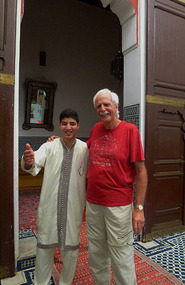
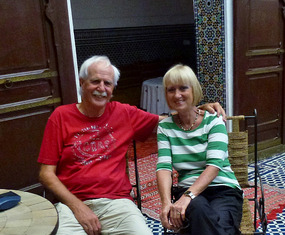
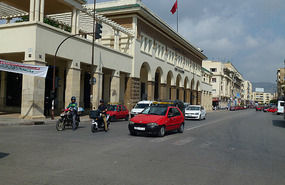
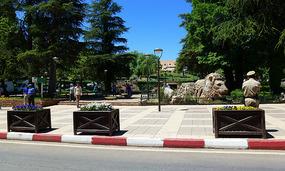
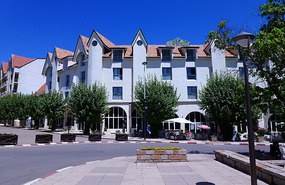
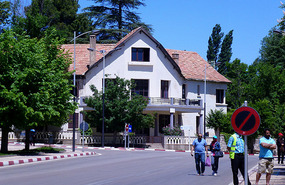
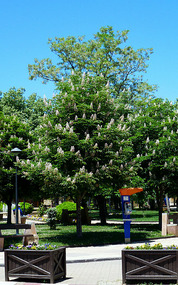
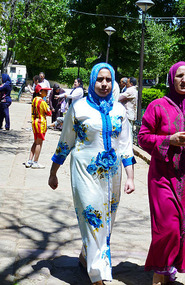
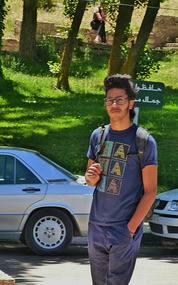


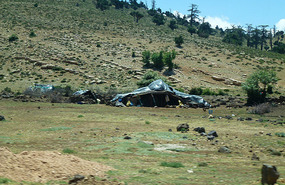
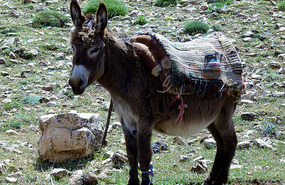

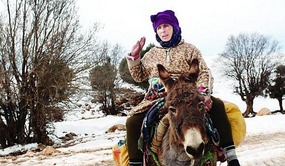


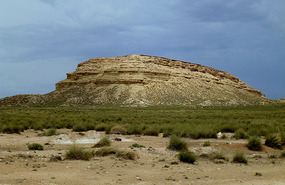
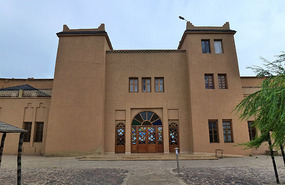
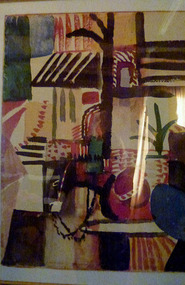
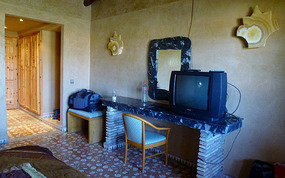
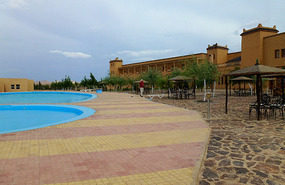
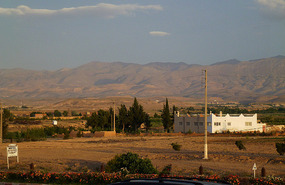
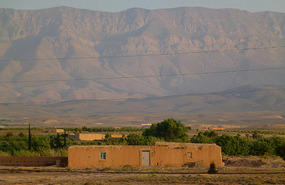
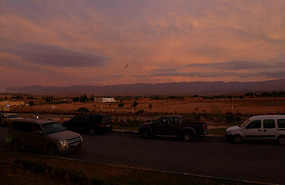





2025-05-22